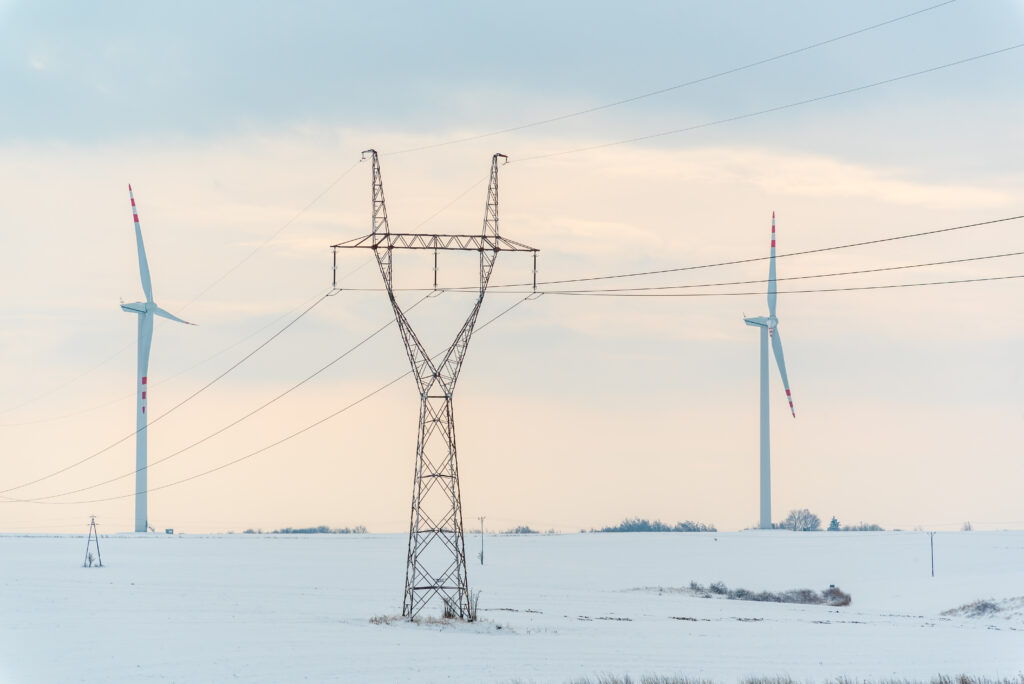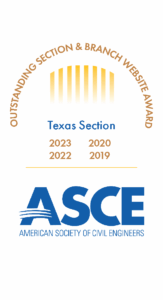Incentives for Essential Infrastructure
A foundation of Reliability- and Resilience-focused regulations and incentives for essential infrastructure
April 2023
by Geoff Roberts | Beyond Storms Infrastructure Network Resilience Task Committee Chair

Reliability and resilience are seldom the central focus for regulations and legislative actions. As a result, the unintended consequences from the obligations of those regulations are seldom tempered by considering and mitigating the potential negative impacts of the regulation(s) on reliability and resilience. The resulting impacts are often hidden until the infrastructure is stressed beyond normal conditions and fails in some way in the future. The tragic and costly examples from Winter Storms Uri and Viola starkly confirm that the financial consequences and tragic human cost of reliability and resilience failures on essential infrastructure can be more detrimental and deadly than previously considered. To start to address this issue in a constructive and meaningful way, we will focus on three critical failures that contributed to the problems experienced during Winter Storms Uri and Viola.
But first, . . .
What is Essential Infrastructure? What is Reliability and Resilience?
Essential infrastructure means the assets, infrastructure, networks and systems and processes that provide essential services needed for social and economic wellbeing. This infrastructure may commonly be described as “public infrastructure”, but the provision of the infrastructure may be provided on a public, private or hybrid basis. The services provided may include, but are not limited to services such as telecommunications, transportation, water supply, solid waste, energy, and electricity.
Reliability is the access to the essential service that you need when you need it. It is binary – it works, or it doesn’t. Examples: In the case of electricity, it is confirmed every time the user turns on the switch. For water, it is having continuous, access to clean potable water at the tap in the quantity needed. Resilience is different. It serves as the “backstop” for reliability. It is a measure of how robust the system is to withstand shocks and continue to operate, or if it fails, to quickly recover and operate again. This means stronger infrastructure configurations and strong institutional resourcefulness by those who design, operate, and maintain them.
There are 3 critical aspects of ensuring reliability and resilience to essential infrastructure:
- Ensuring Revenue Sufficiency to avoid the adoption of a run to fail solution.
- Interdependence risk and matching processes with technical and operational realities that consider extreme events.
- Early recognition of signals that indicate infrastructure fragility and bias to take corrective actions.
Revenue Sufficiency
One of the key issues identified in the ASCE Texas Section Reliability and Resilience in the Balance report was the problem of revenue insufficiency in the ERCOT energy-only model. Revenue Insufficiency occurs when there is insufficient revenue to satisfy the capital, operations, and maintenance requirements of the infrastructure to ensure reliable and resilient operations. The predictable outcome of this reality is that this means the system is run until it fails. Studies have shown that run-to-failure models typically cost four to five times or more than routine maintenance and frequently results in higher negative consequences to the public and the most vulnerable portions of the public. Examples include:
| Federal incentives for renewable energy failed to prioritize reliability and resilience requirements for reliable power grids in its effort to subsidize non-dispatchable renewable generation or to consider the consequences to reliability and resilience. | The ERCOT energy-only model prioritized short-term low cost and failed to pay for reliability from dispatchable generators who had little or no economic incentive to invest in weatherization, dual fuel capability, firm fuel supply and transportation, and further reliability investments. | Low load factor dispatchable generation in an energy-only model have little or no economic incentive to invest in dual fuel capability with onsite fuel storage, to ensure the availability of fuel during peak demand periods. Without this assurance, these generators rely on interruptible fuel supply and transportation with predictable outcomes when firm markets are prioritized over interruptible markets. |
Subsidizing activities that result in negative impacts to reliability must be either eliminated or offset by other activities that mitigate or balance these negative impacts. Policies that enhance or contribute to reliability should be encouraged. For example:
| Increase support and incentivize, through Revenue Sufficiency, dispatchable renewable resources from biomass, waste to energy, geothermal, hydroelectric, and long-duration energy storage (> 24-hour duration) in addition to other forms of dispatchable generation to ensure adequate reliability and resilience. | To avoid a run-to-failure model, the full lifecycle cost (Revenue Sufficiency) of essential infrastructure should be included in funding decisions. | Periodic public reporting, independently confirmed, of progress towards becoming economically sustainable on critical infrastructure would be a transparent metric for measuring the management, stewardship, and economic health and viability of critical infrastructure. |
Interdependence mitigation and matching processes
Interdependence, a situation when the reliability of one infrastructure sector is reliant or dependent upon the reliability provided by other sector(s) for its reliability and resilience. There are two types of interdependence. The first type is called explicit interdependence, such as when the water industry relies on the electric industry for electricity to run its pumps and compressors. This interdependence is generally well known and understood.
The second type of interdependence is interdependence creep. Interdependence creep occurs when the individual decision to rely on another sector for reliability is made at a small or discrete basis that fails to consider the systemic risk created when this decision is replicated thousands of times and becomes a systemic risk. Regardless of the type of interdependence, interdependence crates situations where a problem tends to cascade between infrastructure sectors and results in far larger negative impacts to reliability and resilience across sectors and the public at large. Examples include:
There is a tremendous reliance on complex models for forecasting outcomes on a dynamic network system. Model bias crept into the model outcomes and systemically under-estimated the impact of extreme conditions including interdependence risks. A lack of routine simulation exercises with relevant industry parties lost the potential for greater transparency on model bias and systemic stresses.
Regulatory response to these issues should encourage and in critical circumstances require, that steps be taken to mitigate interdependence risk. If these recommended actions require new processes, those new processes should be tested and confirmed as being consistent with the physical reality of the infrastructure under extreme conditions. For example: critical load filings, generally related to prioritized loads for local distribution companies to serve, should be confirmed by the LDC that it can adequately physically manage (relays and controls) timely dispatch to prioritize and control the load and that further mitigation steps are in place during events where the physical system is impacted by the weather event (ice, etc.).
| The upstream and midstream sectors should identify their critical infrastructure and file appropriately as critical infrastructure, have minimum weatherization and interdependence mitigation plans that support minimum reliability standards established. | LDCs for all sectors should identify and plan for interdependence mitigation investments and process changes to ensure both systemic reliability and customer level reliability by mitigating interdependence risks. | LDCs must submit interdependence mitigation plans for its critical load customers to ERCOT and the PUCT prior to the beginning of seasonal peak load periods. Critical loads that are also essential infrastructure, like water and wastewater, should have minimum interdependence mitigation plans developed and implemented consistent with minimum reliability and resilience standards. |
Ensure regular simulation exercises across all relevant sectors by industry participants is performed. Require regular and transparent feedback into and reality reconciliation of models to ensure that the predicted outcomes reflect system stress under extreme conditions, especially when considering interdependence risk.
Early signal recognition and lack of a bias to take early corrective actions
One of the key challenges with essential infrastructure is the early signals of potential problems are often obscure or overlooked. These signals can be for an impending weather or outside event or support broader long-term infrastructure investment. H-E-B, for example, took early steps in advance of the Pandemic that positioned H-E-B ahead of its peers in being prepared for the early stages of the pandemic. In the private sector, there are frequently price signals that translate to indicators of over or under investment in infrastructure.
As well, in the natural gas space, gas supply in the Permian region prior to the pandemic was growing faster than the pipeline take-away and processing capacity available, leading to negative local prices and excessive flaring of production. Producers lacking access to firm transportation capacity were in the position of having to pay a buyer to take their product. These price signals led to increased commitments for new pipeline transportation and processing capacity by those producers in need of market access.
Congestion or traffic on roads is an example of another “signal” that infrastructure is insufficient.
During extreme events, infrastructure tends to expose its hidden stresses in a more transparent way. When confronting a weather event, it is often easy to blame the weather and quicky return to routine activities. We discovered in analyzing the impacts of Winter Storms Uri and Viola that the lessons learned, and the problems identified, extended far beyond the issue of weather, and required a more fundamental assessment of the issues. Weather was simply the catalyst for identifying that we had a series of infrastructure issues, many of them only peripherally related to the weather events themselves. Some examples of this include:
| Government and industry can benefit from understanding how H-E-B, LP built a culture that proactively took steps in superior preparedness in advance of the pandemic to prepare, manage and resource for the crisis. This aspect of proactively managing reliability and resilience in the H-E-B, LP culture should be fully embraced any party seeking to prioritize reliability and resilience. | During the EEA from Winter Storms Uri and Viola, utility scale battery storage were net consumers of electricity while other loads were being curtailed. Whether desirable or not, there should be explicit rules in place that contemplate conditions, such as the EEA situation. |
Conclusion
Reliability and resilience are a societal expectation in critical infrastructure. Regulatory and legislative actions can be constructive and supportive of reliability and resilience, or it can be damaging and corrosive to reliability and resilience. There are three lessons for consideration:
- Revenue Sufficiency, to ensure adequate resources to operate and maintain infrastructure, is frequently overlooked, or ignored and yet it may be the single most impactful aspect contributing to Reliability and Resilience and to ensure that we manage our infrastructure in an economically sustainable manner.
- Recognizing interdependence risk and implement steps to mitigate.
- Establish a bias to identify early signals of infrastructure stress and have a bias to take early actions to mitigate that stress.
Read the full Reliability & Resilience in the Balance report in response to Winter Storms Uri and Viola at www.TexASCE.org/beyond-storms.



